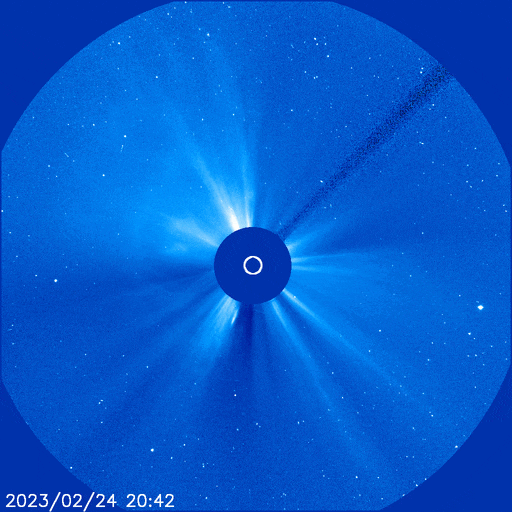A "CHAIN REACTION" EXPLOSION ON THE SUN: A magnetic filament connected to sunspot AR3229 erupted on Feb. 24th, producing a chain reaction of events that could lead to a geomagnetic storm on Earth. The action began at 1949 UTC when the filament rose up and sliced through the sun's atmosphere:
The violent liftoff destabilized sunspot AR3229, sparking a long duration M3-class solar flare (2030 UTC). Radiation from the flare, in turn, ionized the top of Earth's atmosphere, blacking out shortwave radio transmissions around the Pacific Ocean: map. Mariners and ham radio operators may have noticed loss of signal at frequencies below 25 MHz for as much as an hour after the explosion.
Next, a CME emerged from the blast site. Coronagraph images from SOHO show a lopsided halo with an Earth-directed component:

Type II solar radio emissions from the leading edge of the CME suggest a departure speed of 1200 km/s (2.7 million mph). The flank of the fast-moving cloud could reach Earth on Feb. 27th. NOAA analysts are modeling the CME now, so stay tuned for a refined forecast.
There's more: Shock waves inside the CME accelerated protons to nearly light speed, and they have already reached Earth. Our planet's magnetic field is funneling the particles toward the poles where a second type of radio blackout is underway--a polar cap absorption (PCA) event. Airplanes flying over these regions may find that their shortwave radios won't work due to the ionizing effect of infalling protons: map.
Spaceweather.com